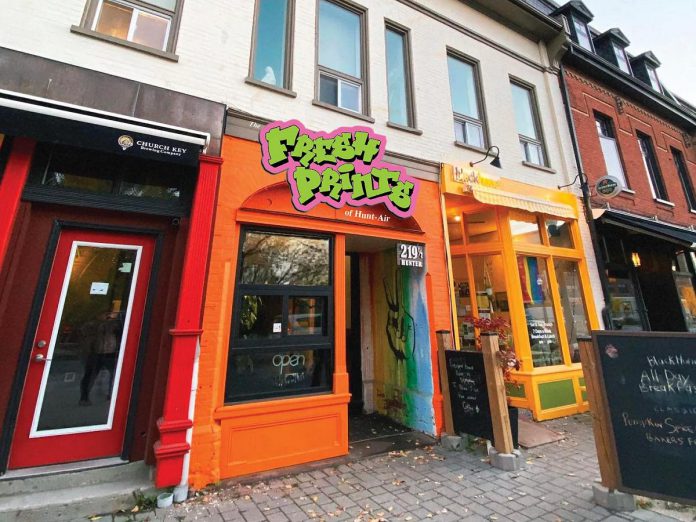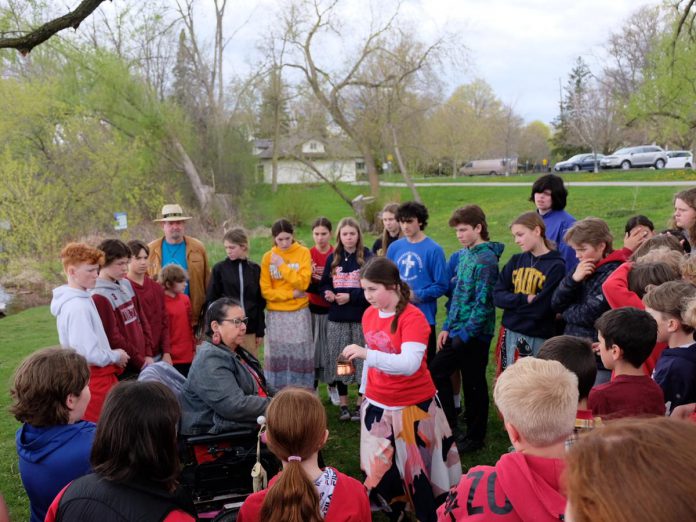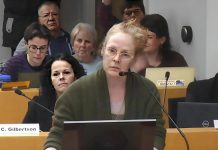
Imagine a sign as you enter town: “Welcome to Peterborough / Biindigen Nogojiwanong — the Place at the Foot of the Rapids”. It would remind us of our place here, a calm site by the river after rapids and travels, and the traditional and current territory of the Michi Saagiig Anishinaabeg (Mississauga Ojibwe).
Orange Shirt Day and National Day for Truth and Reconciliation are coming up on Saturday (September 30). What might we do here to foster deeper understanding of residential schools’ impacts and bring forth untold truths and steps towards reconciliation?
Like other cities, we could follow through with our vision and official plan and add a welcome sign, written in Anishinaabemowin (the Ojibwe language). Maybe at entrances to the city, in business windows, and at City Hall, as my friend Georgie suggests. What else can we think of, tangible or not, that are direct actions towards reconciliation?
Representatives of some of the local Indigenous ally groups recently met with Mayor Jeff Leal and the city’s diversity, equity, and inclusion advisor Reem Ali. We wanted to explore local possibilities and respond to the calls to action and justice for municipalities made by the Truth and Reconciliation Commission and Missing and Murdered Indigenous Women and Girls Inquiry.
We came to learn that the city is working with First Nations and the urban Indigenous community, offering internal training for city staff, and working toward other steps over the coming months. Several councillors have had other good ideas, expressed during last fall’s municipal election campaign (e.g., relationship building, consultation approaches, and economic partnerships).
This is a start. It’s going to be a big year, with November marking the 100th anniversary of the problematic Williams Treaty, a main treaty applying to this region of the country. Readers may be surprised to learn that treaties are constitutional agreements, still in force today, that set out responsibilities for First Nations, governments, and settlers like me. That means that we are all treaty people and need to reflect on what responsibilities we are committed to.

This ongoing treaty relationship is also cause to reflect on our ancestry and heritage. I have Celtic roots and grew up in Michi Saagiig territory, extending across what is known as central Ontario. On Orange Shirt Day, I’ll learn more about area treaties and my responsibilities under them. Perhaps I’ll read a bit, get out and connect with critter kin on the land, learn a few more words or bird names in Anishinaabemowin. Or I’ll put up my own little sign, or share questions and learnings with my family at Thanksgiving.
Making a donation and wearing an orange “Every Child Matters” shirt is one way I can show support. A new shop owned and operated by Indigenous local maker Nish Tees just opened on Hunter Street [Fresh Prints of Hunt-Air at 219-1/2 Hunter Street] if you are looking for an orange shirt of your own. There are lots of interesting videos, graphic novels, and kids’ books out there around Orange Shirt Day to share with younger ones.
As well, for me, attending Indigenous-led events is always a great chance to learn.
Curve Lake just held its Mnoominkewin (Wild Rice ways) festival and 70th Pow Wow. On September 30th, Hiawatha First Nation is hosting an awareness event from 2 to 4 p.m. at Confederation Square in front of City Hall (and a later feast).
On the same day, there’s an Anishinaabe art tour from 2 to 3 p.m. at Trent University’s Enwayaang building, and a musical benefit concert from 3 to 10 p.m. at Crook and Coffer on Hunter Street (formerly the Garnet). The Nogojiwanong Friendship Centre (580 Cameron Street) will host a sacred fire, crafts, and information from 2 to 6 pm on the 29th, and Trent hosts more events around the weekend and on October 2nd.
On a larger scale, there was also the March for the Land at Queen’s Park in Tkaronto/Toronto on Wednesday (September 27) to address the mining claim system and encroachment on five First Nation territories in northern Ontario. The march is in part about consultation, reconciliation and environmental racism.

Environmental racism refers to the systems that enable environmental privileges and exploitation for predominantly White communities while pushing environmental contamination and damaging consequences onto mostly racialized/ BIPOC (Black, Indigenous, People of Colour) communities. Addressing significant issues of environmental racism from a Truth and Reconciliation perspective can bring to light many other issues that need attention.
Reconciliation is a journey, not a destination. We might sometimes be in the rapids, in our parallel two rows of settler ships and Indigenous canoes, as originally agreed in the Two Row Wampum treaty. Yet we’re on the same river, heading for a calmer place where we can chat, share, and camp together — and maybe find a “Welcome/Biindigen” sign. Still, to get there, we’ll all need to paddle.
Ian Attridge is a lawyer, Trent University instructor in environmental law, and member of the Unitarian Indigenous Allies Working Group. Across Canada and beyond, Ian has advised land trusts, non-profit organizations, landholders, and government agencies at all levels.


























